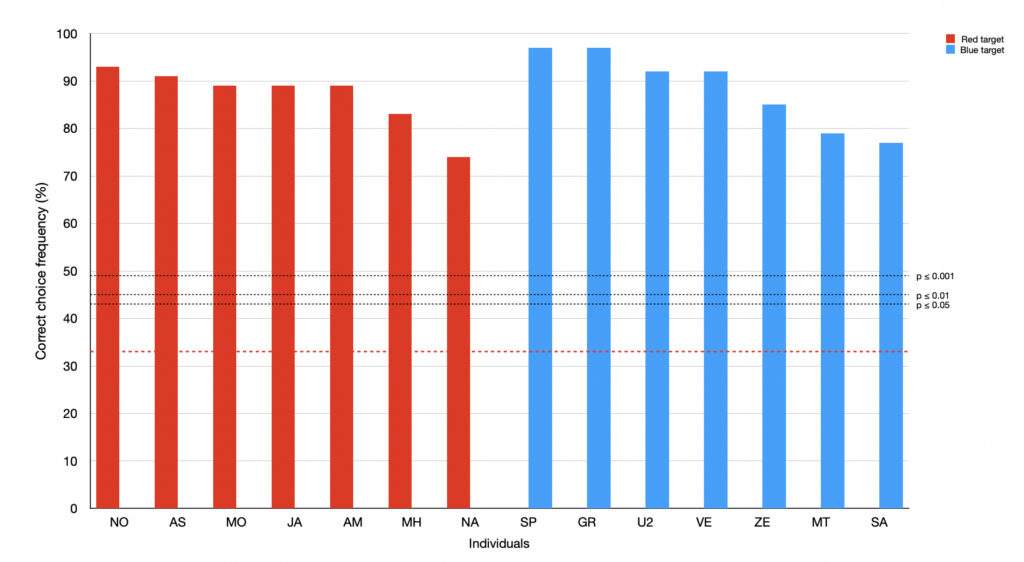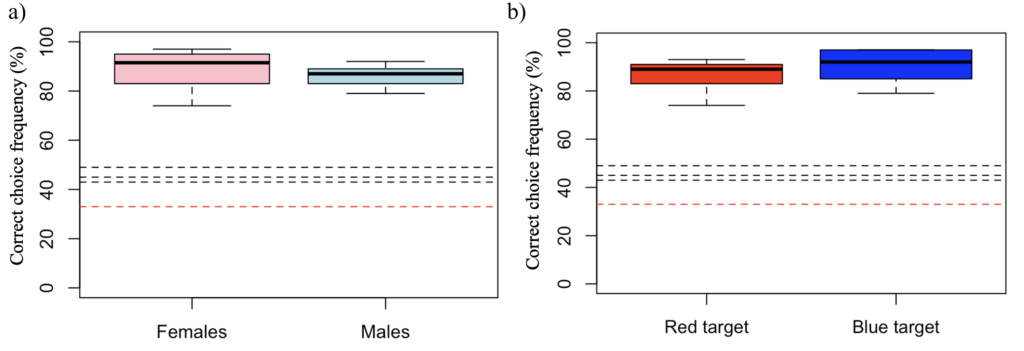All of the 14 individuals tested showed a highly significant result discriminating the two colours presented in the three-choice target. The results were calculated as the number of correct choices and correct choice frequency. The correct choice frequency was calculated in percentage and three significance thresholds were set at 43% (p ≤ 0.05), 45% (p ≤ 0.01), and 49% (p ≤ 0.001). All individuals scored higher than 74%, which indicate that all penguins were able to discriminate the colours and did not choose randomly.

There was no significant sex difference (a) in frequency of correct choices (p =0.3), calculated through a Wilcoxon-Mann-Whitney test. The colour (red or blue) of the target did not influenced the frequency of correct choices either (b).

The different brightness of the target did not significantly affect the penguins’ choices. Each correct choice was given a value of one and each incorrect choice was given a value of zero. While no statistical test was performed, the similar mean values across the different brightness, as shown in the boxplots, suggests that it was not a significant factor.
